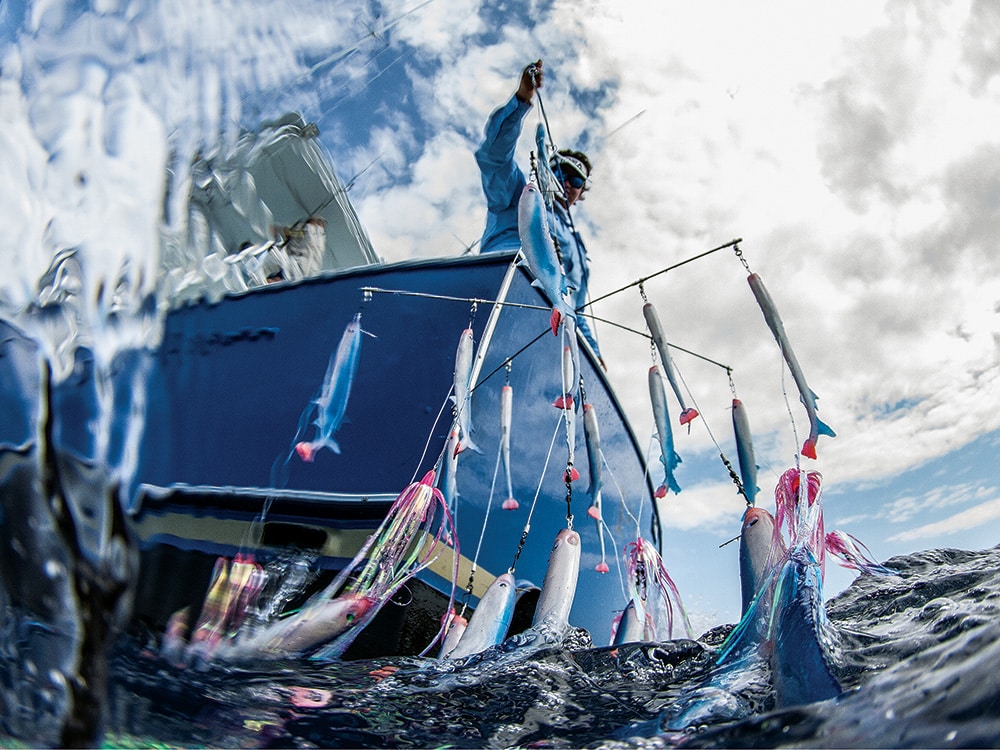
Dredges might be a massive pain in the rear for many small-boat anglers. They can be expensive, bulky and heavy, difficult to stow, difficult to deploy and difficult to clear when a hot billfish zings from port to starboard at 5,000 mph.
But dredges are also an essential part of your spread — one you simply shouldn’t do without if you want to have any prayer of competing with the big dogs.
The Size of the Dredge
“Don’t be scared to put a dredge into the water,” says Capt. Jeremy Hicks, who runs the 36-foot Calypso out of Hatteras, North Carolina. “And I mean any dredge. The fish don’t sit around reading Melton [Tackle] catalogs, so whatever type you choose, it will help fool them into at least looking at your spread. It’s true that dredges pick up weeds, they’re expensive and they can be a hassle. But having that ‘school’ of bait behind your boat will draw in more fish.”
Fortunately, anglers can ease any anguish over deploying these unwieldy rigs with a few smart moves that differentiate small-boat dredge tactics from those used on big sport-fishers. Those moves begin with your dredge of choice, and for a small-boat angler, bigger doesn’t necessarily mean better.
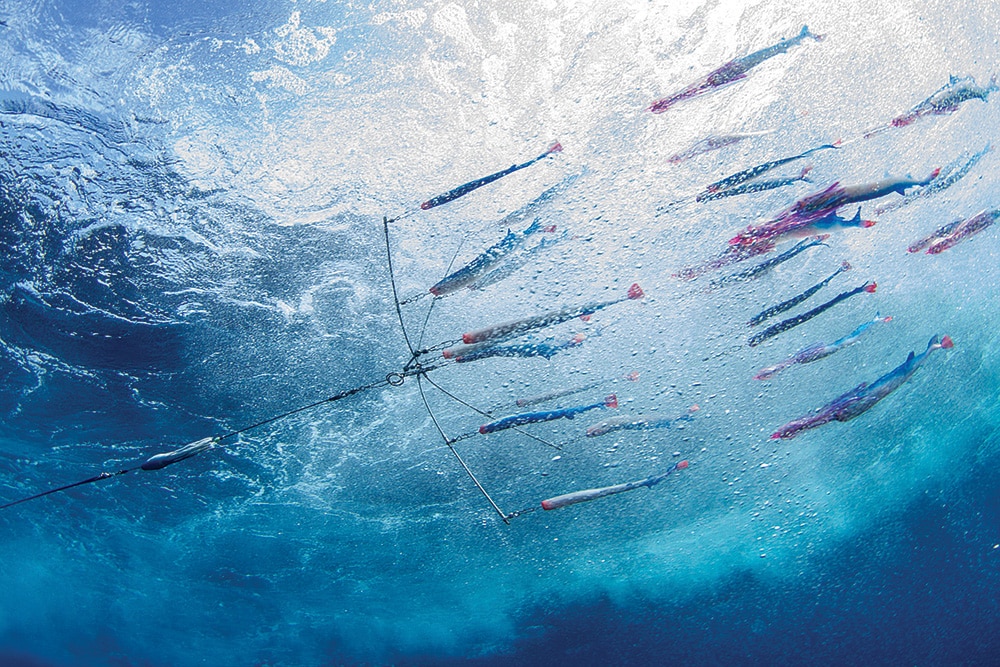
You’ll need to consider stowage space, of course, but an even bigger issue comes with deployment and retrieval. While a large sport-fisher might be rigged with dedicated dredge rods, electric reels and outriggers that can handle the pressure of a dredge, few small boats are. Instead, the dredge lines often run from a boom rod, a downrigger or even directly off stern cleats. That means cranking or hauling the dredge up by hand, a difficult job since even the smallest dredges and their weights create a ton of drag as they move through the water.
“Manageability is key for small‑boat anglers,” says Bill Pino, purveyor at Maryland-based Squidnation, which makes dredges, daisy chains and teasers, and captain of a 32-footer. “Everyone wants a bigger dredge, but clearing them is much more difficult, especially on small boats, where you’re usually short-handed. If a fish is on one line and another fish is in the spread, you just don’t have enough hands to get the dredge, clear lines, feed the other fish and, oh, by the way, get the teasers up too.”
A four-arm dredge with 20 or so squids is a good starting point, Pino adds. “That’s a lot easier to handle than a six-arm dredge with 100-plus squids.”
How Deep to Send the Dredge
Where the dredge should run differs for a small boat, and depends to a large degree on the prop wash your boat creates and the visibility it affords.
“You want the dredge to run in clean water, not the wash itself,” Hicks says. “The white water and commotion created by the boat attract fish, but you want the dredge to be where the fish can easily pick it out. This also allows you to see the fish better when they approach the dredge or a bait fished near it.”
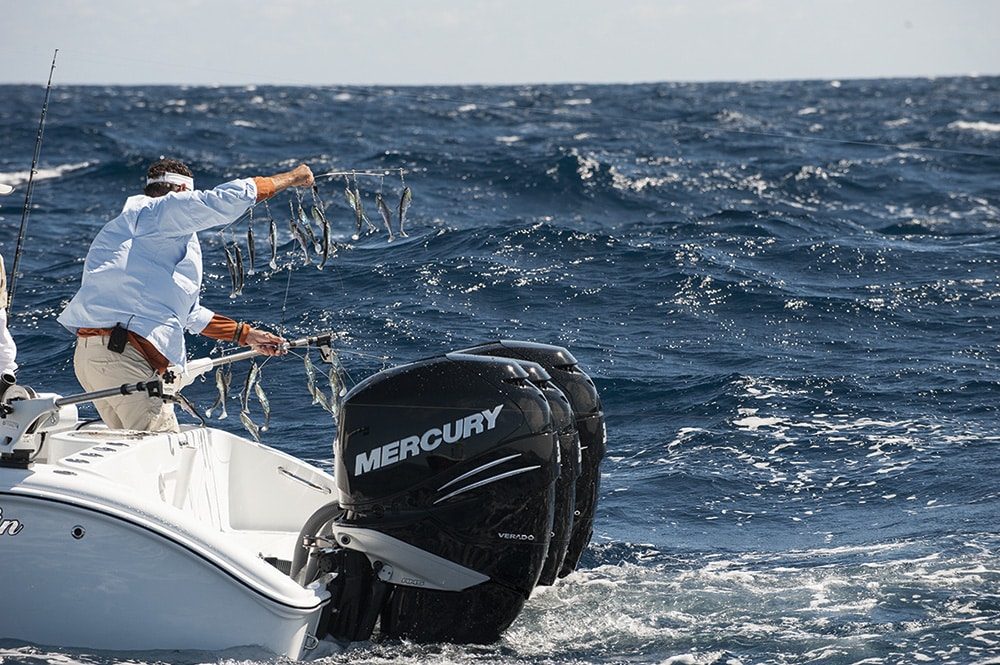
Pino agrees. “Being able to see the dredge is a must, so you know when a fish comes up on it,” he says. “On smaller boats, that often means you need to get it down faster and keep it closer. Otherwise, you’ll never be able to see it. The exact distance of the sweet spot differs from boat to boat, so just try to set it in the cleanest water possible, well outside of bubble trails.”
For most small boats, that means sending the dredge back about 20 to 30 feet off the transom, where it should run anywhere from just below the surface to 6 feet deep. Deeper is generally considered better, and if your boat has an elevated observation post you can run your dredges on the deeper side and still eyeball them.
If everyone aboard is at deck level, you might not be able to send the dredge down very far without losing visibility. In all cases, make sure it’s deep enough that the arms don’t break the surface when surfing a wave. If they do, you’re setting yourself up to tangle with your flat lines.
All About Dredges
Deploying a dredge without the benefit of electric reels usually requires slowing the boat to a crawl while one crew member handles the dredge itself and another handles the line. The line handler can support most of the weight by holding the cannonball or sinker in his or her right hand and the main line in the left hand.
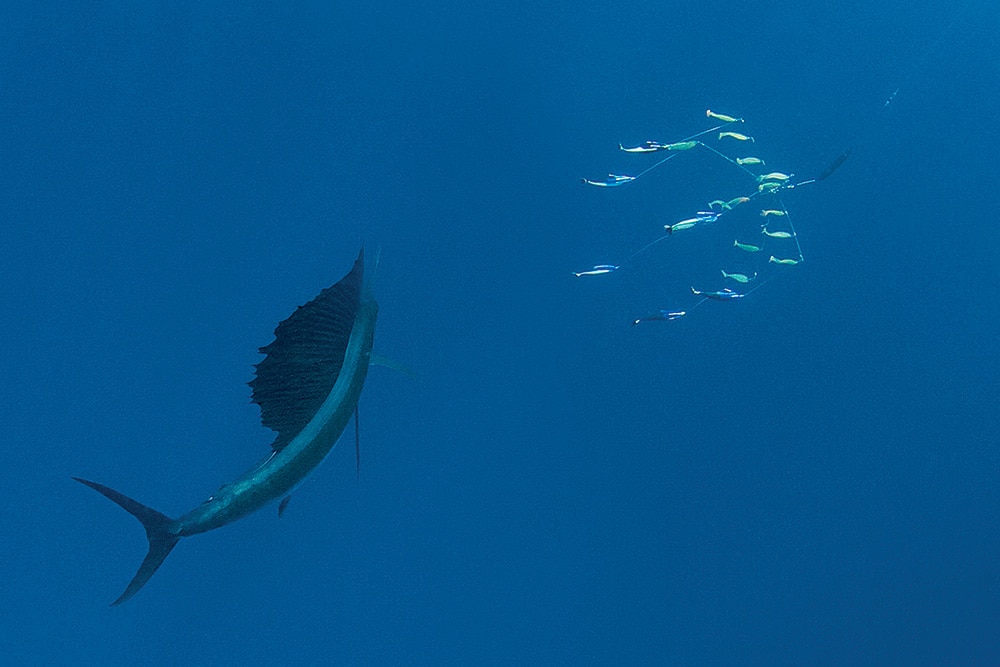
Crew member No. 2 supports the main body of the dredge, lifts it over the side and makes any necessary adjustments to the individual lines to ensure they’re tangle free. Once the dredge is ready to be lowered, drop it into the water and allow it to sink with minimal tension at first. Deploy too slowly and the dredge arms might skim or skip on the water’s surface, causing the rig to cartwheel, which results in a tangled mess.
Hauling the dredge from the water can be even more of an adventure — because that usually happens when there’s a hot fish on the line. Clear all fishing lines and teasers before dealing with the dredge, since it’s closer to the boat and will require some careful timing. The maneuver has to match the fish’s behavior because the captain will need to slow the boat (pulling in a dredge manually at 5 or 6 knots is virtually impossible). Obviously, you’ll want to do this only when the fish isn’t running toward the boat and quick maneuvering doesn’t seem to be an immediate necessity.
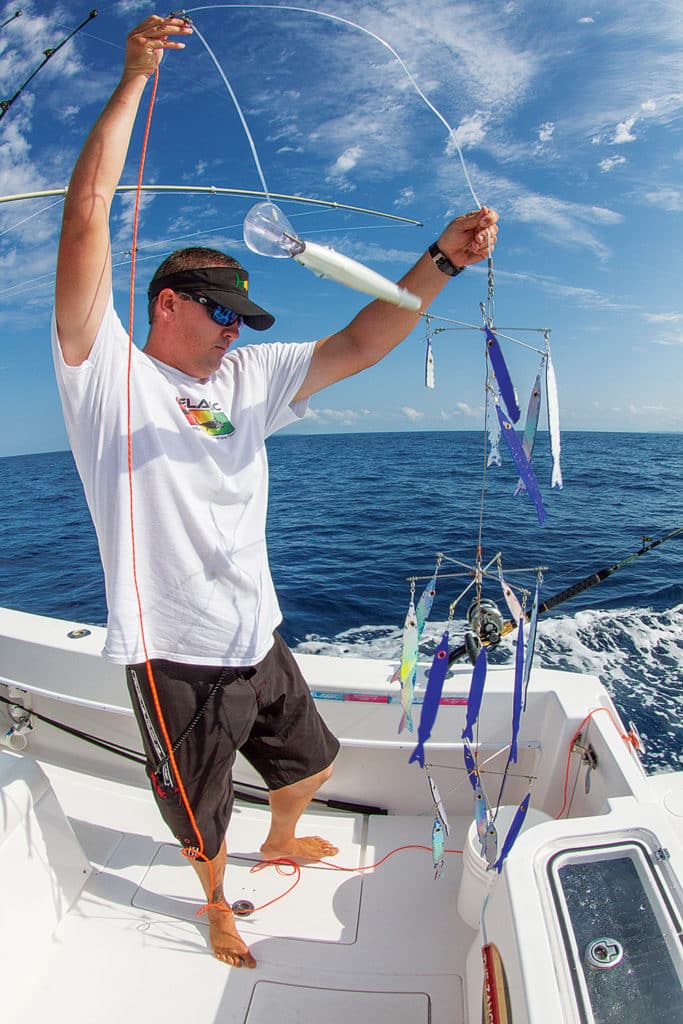
As soon as the boat slows, yank the dredge out of the water as quickly as possible and place it out of the way. On many outboard boats, the motor well provides temporary dredge stowage. But be careful to make sure every single line and teaser is completely inside the transom or you could foul your props while maneuvering on the fish.
Will that fish sometimes turn and charge the boat when you have the dredge halfway up? You bet. Will deploying the dredge take a lot of time and effort? Yes. Is that dredge going to pick up weeds, snag a line or three, or maybe even get into the prop once in a blue moon? Absolutely. But all the trials and tribulations are well worth the trouble. These things suck in fish like a baitball swimming right behind your boat.
Prospect While Using a Dredge
Far too many anglers deploy their dredges and lines, then troll, troll, troll until the day is done. You’ll catch more billfish if you actively “prospect” next to your dredges.
Prospect with a pitch bait, usually a naked chin-weighted ballyhoo that is held just behind the transom and then free-spooled so it sinks right past the dredge. With the bait about 10 feet behind the dredge, thumb the spool so water pressure forces the ballyhoo to swim back up to the surface. Let it swim there for a moment, then reel it in and begin the process again.
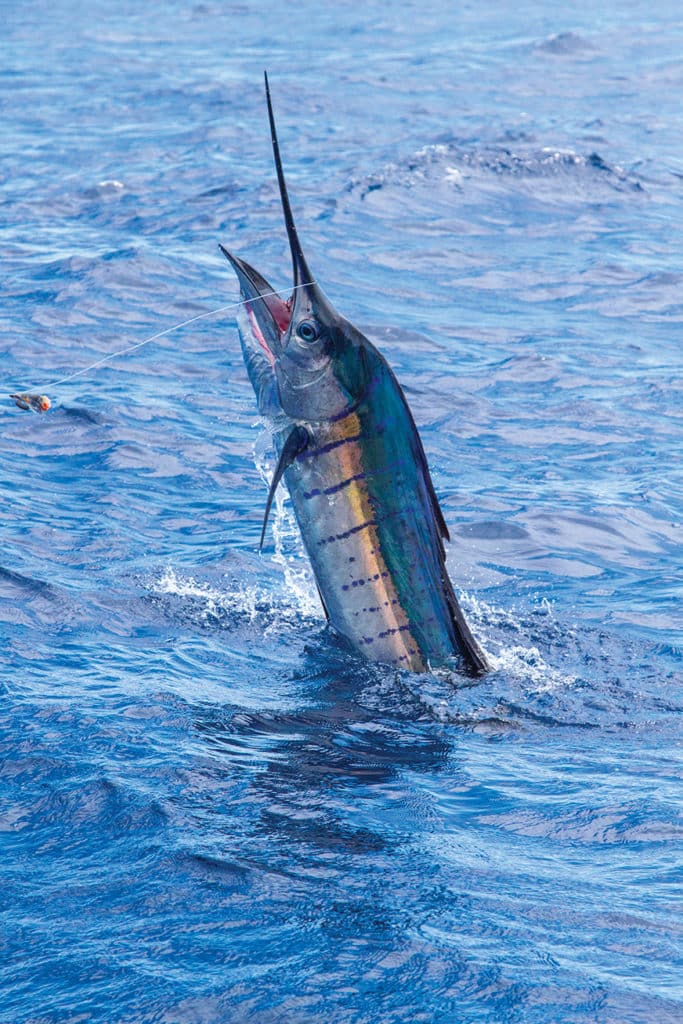
Although spotting fish that come in on the dredge presents the ideal opportunity, plenty of fish swim up to a dredge and are never spotted from the boat, as anyone who has watched dredge-cam footage can attest. Constantly prospecting gives you a better shot at these fish.








